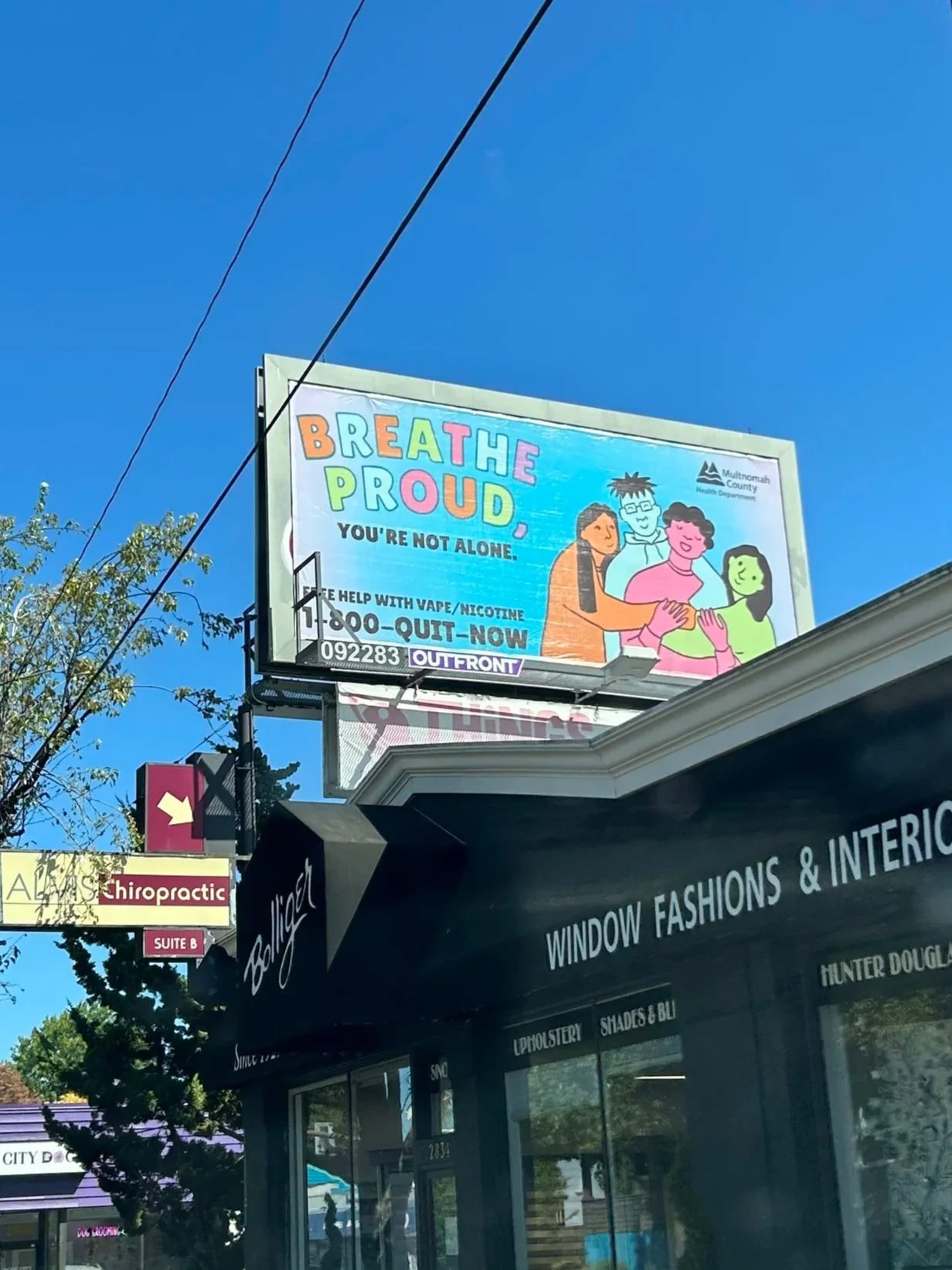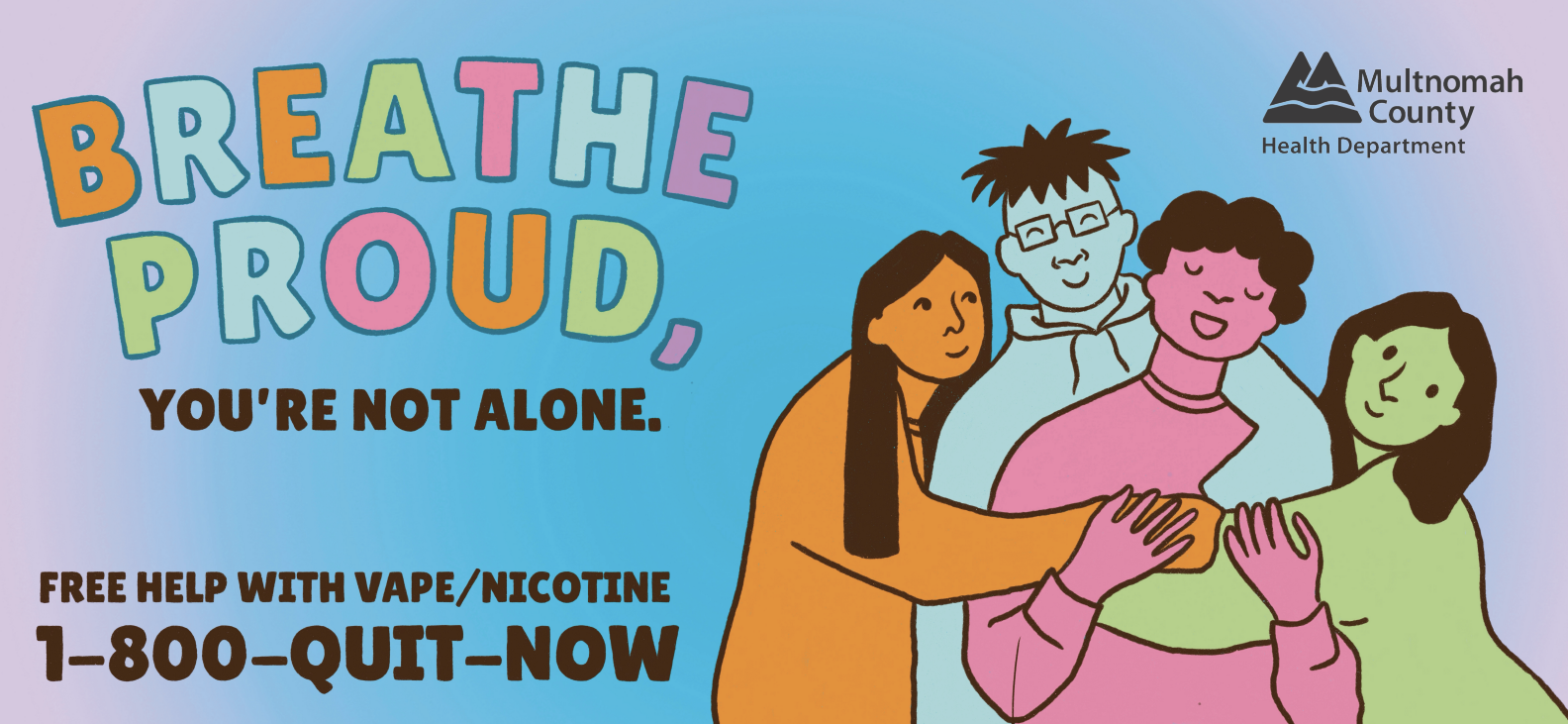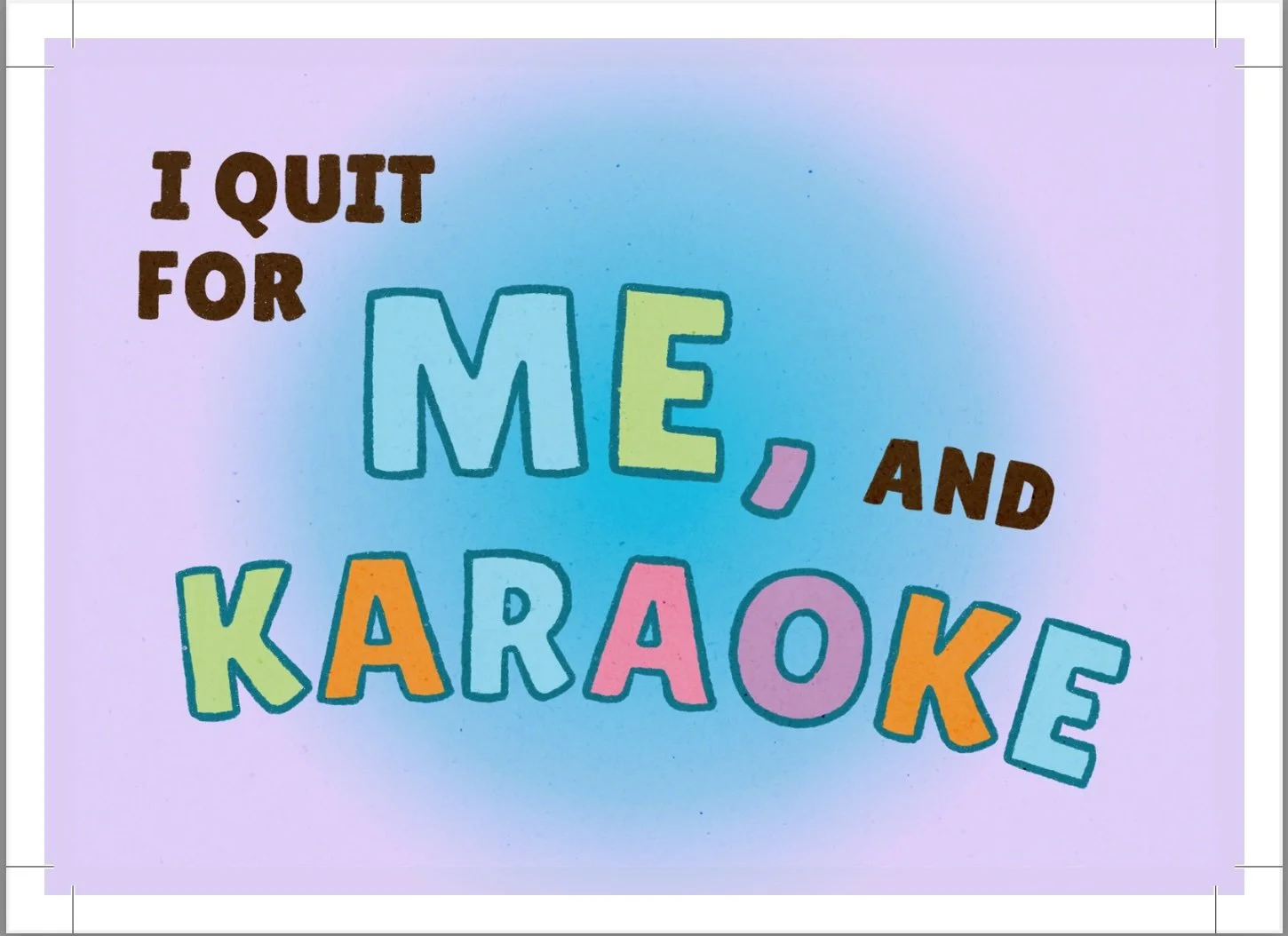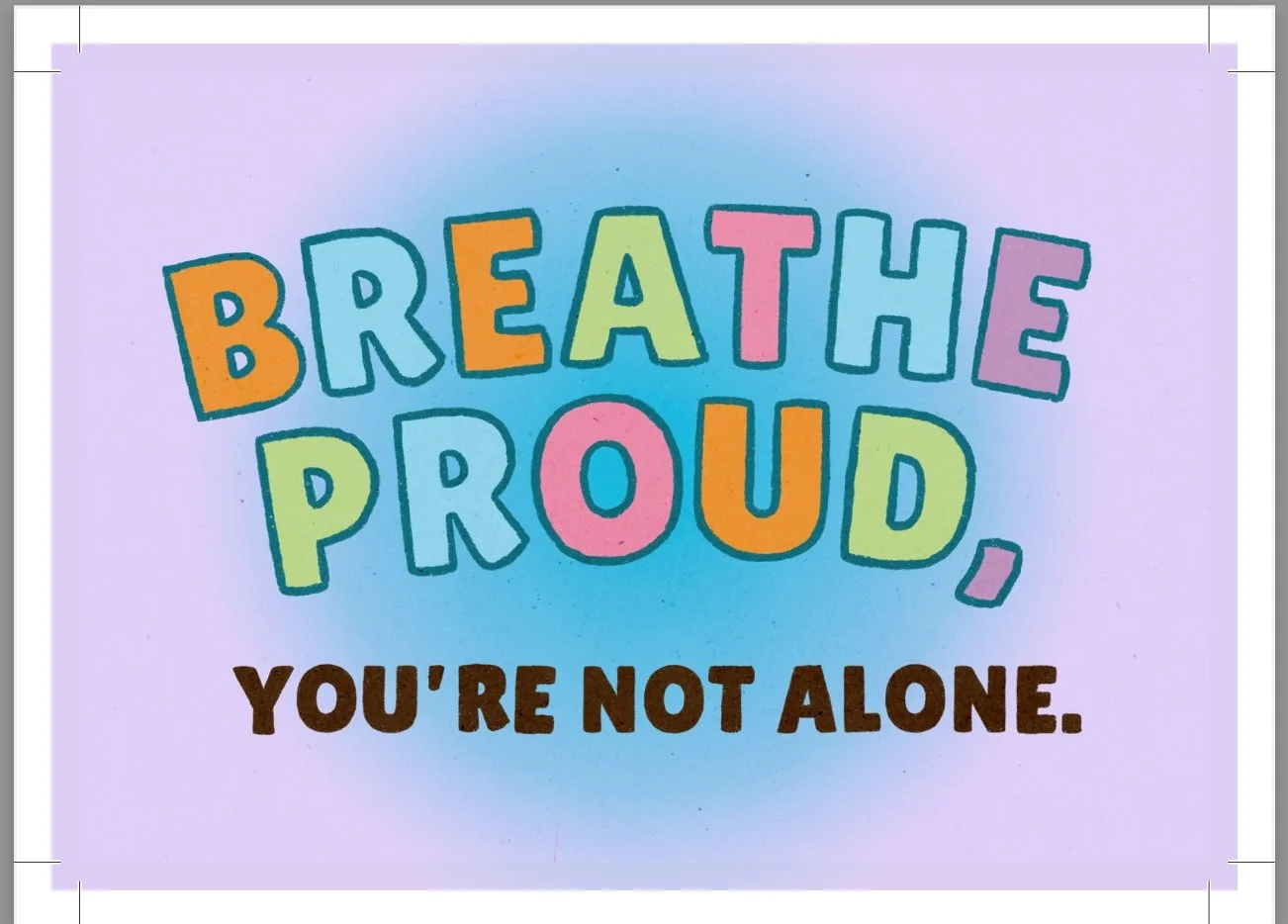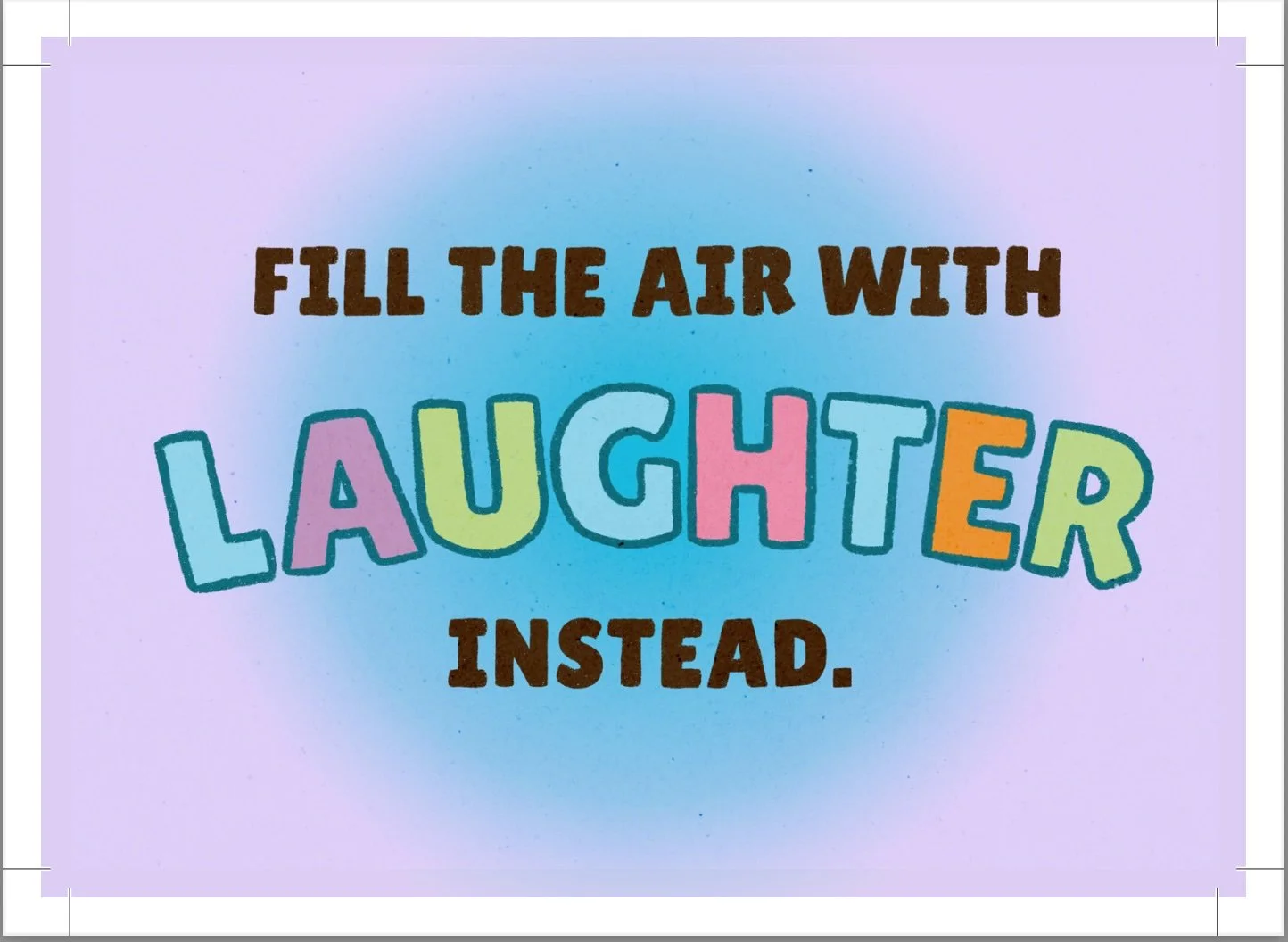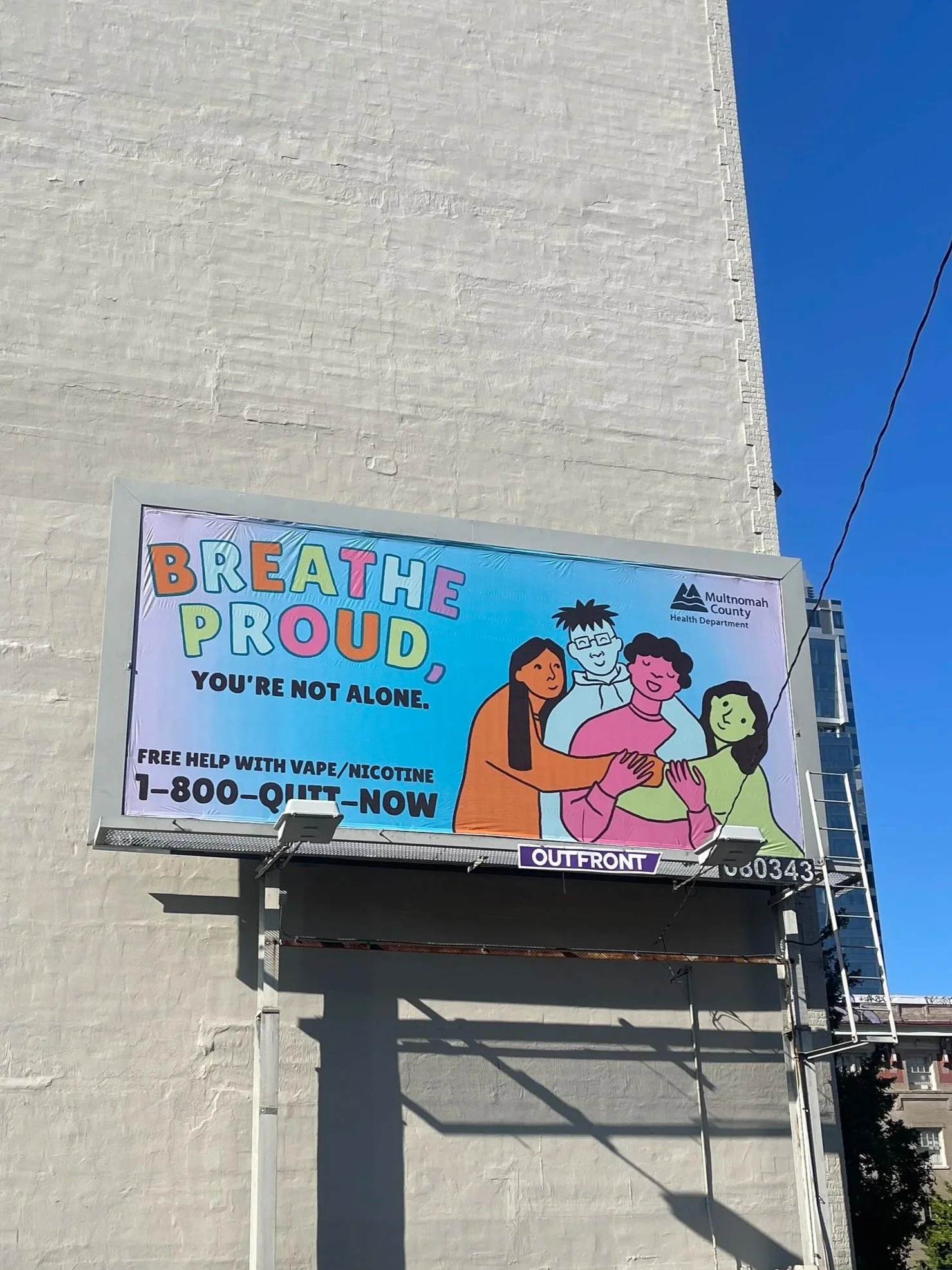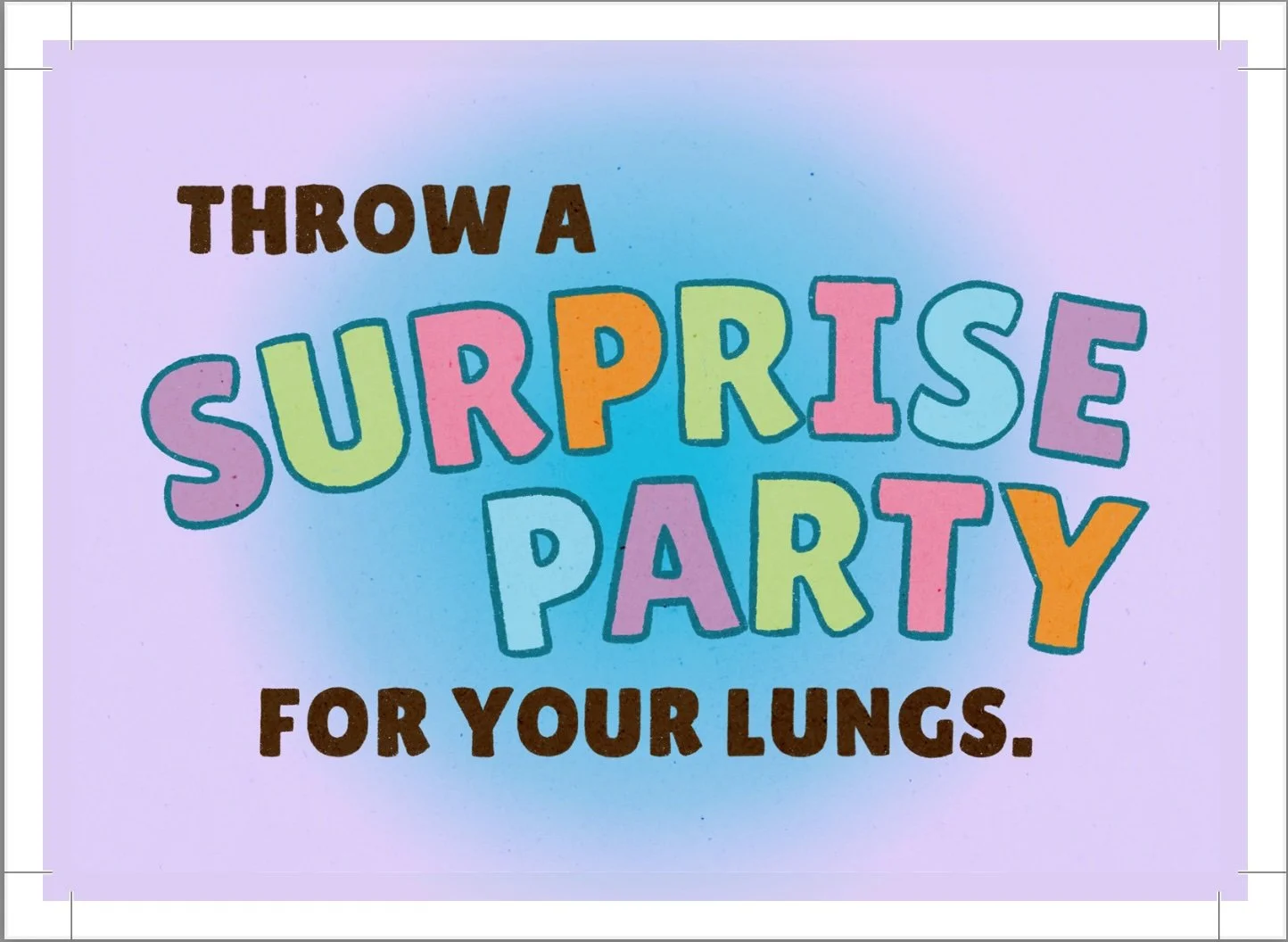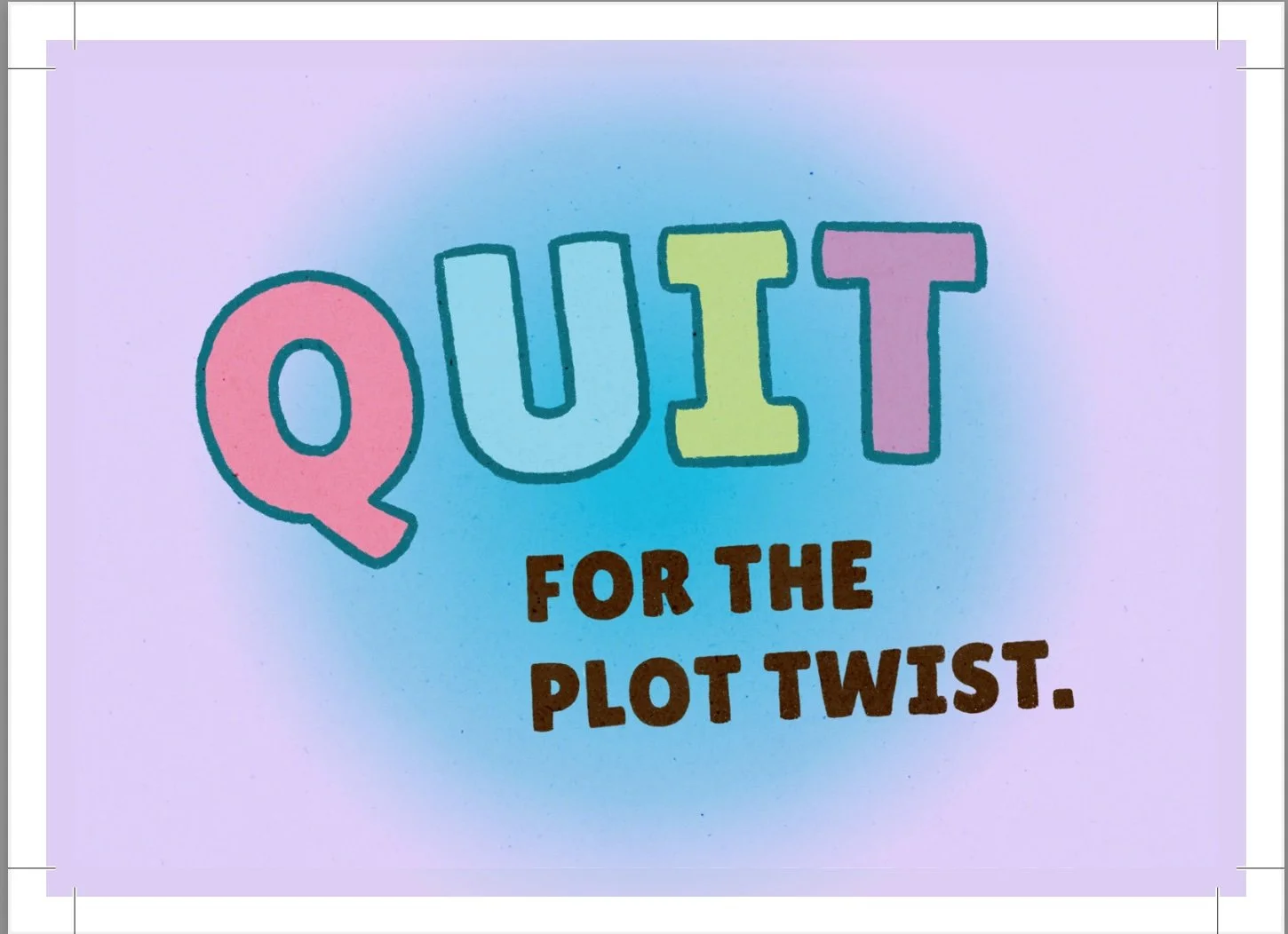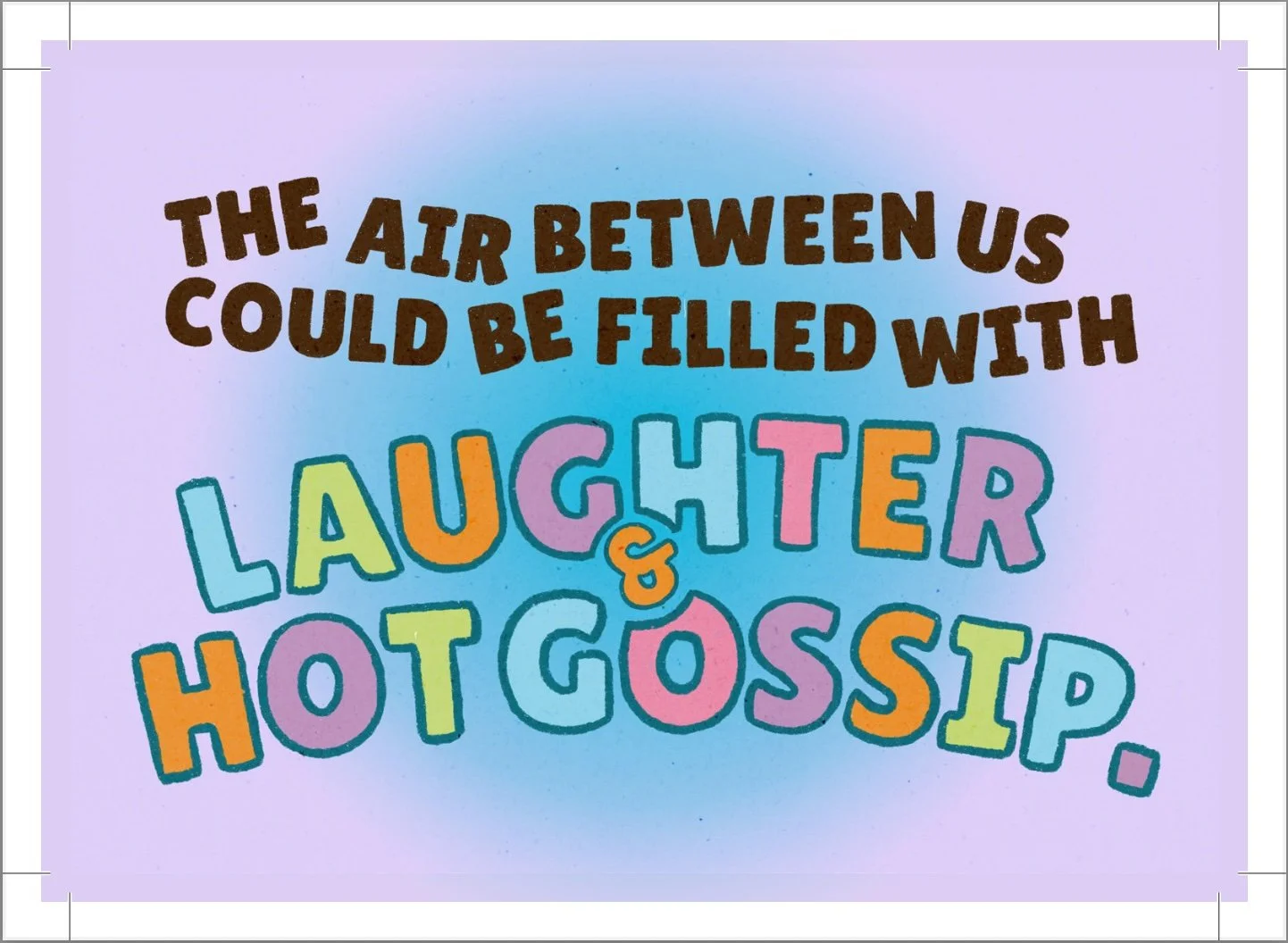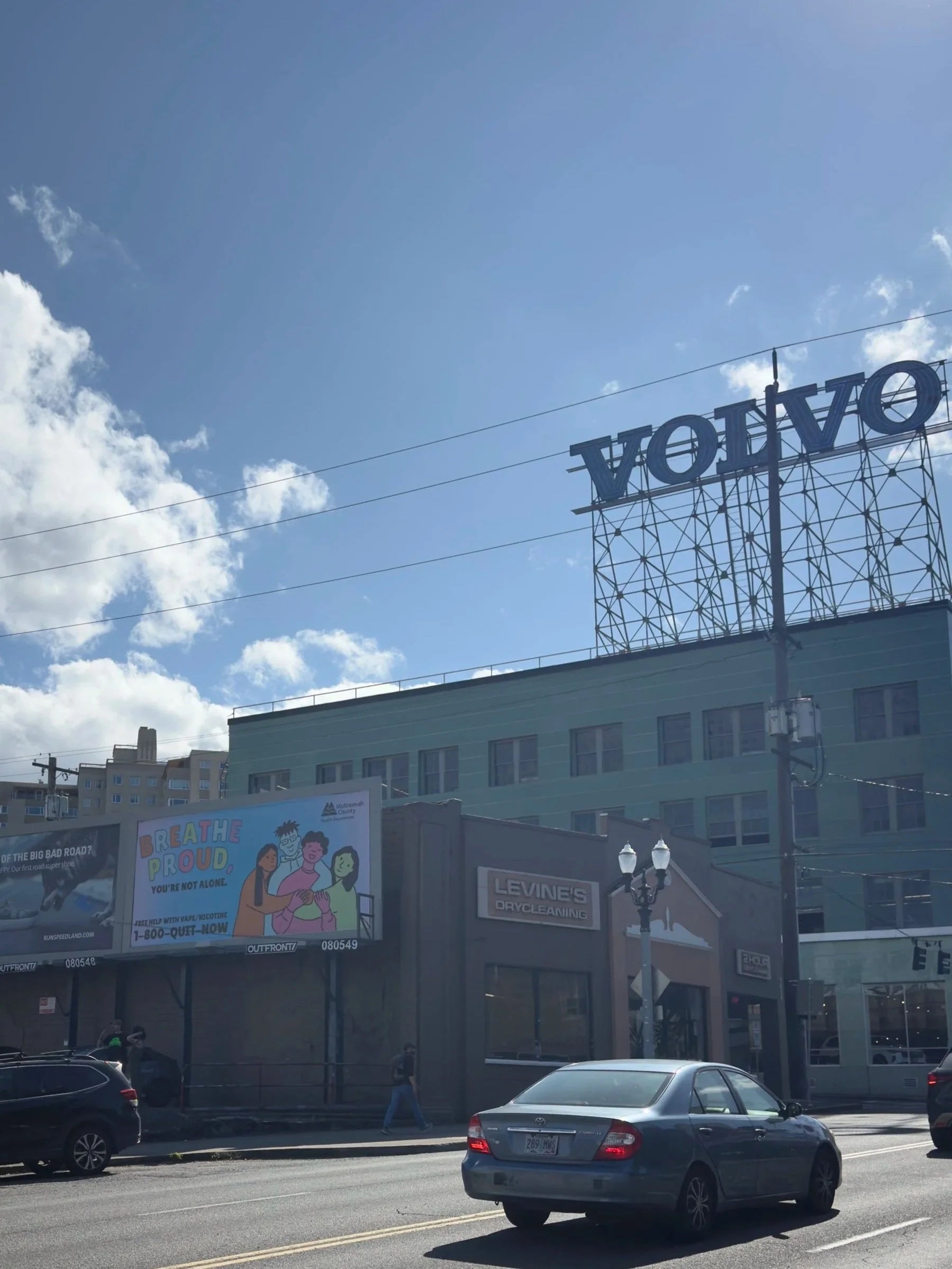Multnomah County
Client
Multnomah County
Role
Junior Strategist
Agency
SW Agency
Media
Billboard, Posters, Contact Cards.
The Context
Multnomah County’s Tobacco Prevention and Control Program is dedicated to reducing the harms of tobacco and nicotine use across the community. For Portland PRIDE, the department sought to increase LGBTQ+ support for a ban on flavored vape products — a category disproportionately used within queer communities.
As the Junior Strategist on this project at SW Agency, my role was to uncover the cultural, emotional, and behavioral drivers that shape queer communities’ relationship with tobacco, and to build a campaign grounded in truth, advocacy, and identity protection.
Strategic Approach
My strategic goal was to connect tobacco use to a much deeper emotional tension: the conflict between queer identity and funding industries that work against LGBTQ+ well‑being.
This required research not just on product use, but on queer cultural history, political behavior, and community values.
The Challenge
The LGBTQ+ community has been intentionally targeted by tobacco companies for decades. This targeting includes:
Ads placed in queer publications
Sponsorship of PRIDE events
Messaging that frames tobacco brands as allies
As a result, LGBTQ+ adults use tobacco products at significantly higher rates than straight/cisgender peers.
The deeper complexity: while tobacco brands appear supportive on the surface, their political spending and lobbying often align with conservative agendas that undermine LGBTQ+ rights. Most community members don’t know this.
Meanwhile, disposable vapes and tobacco production contribute heavily to environmental damage — an issue that resonates strongly with many queer people who value sustainability.
This created a dual challenge:
Expose the truth behind tobacco companies’ performative allyship
Shift attitudes toward supporting a flavored vape ban
Research Focus
My research centered on five pillars designed to uncover both behavioral and emotional drivers:
Historical Targeting of Queer Communities
I examined decades of tobacco marketing that intentionally positioned tobacco brands as LGBTQ+ friendly — despite harmful health outcomes.
Current Tobacco Usage Patterns
A review of public health data showed significantly higher usage of cigarettes and vapes among LGBTQ+ individuals, especially youth.
Political Spending by Tobacco Companies
I analyzed lobbying disclosures that revealed contradictory political behavior: while appearing queer-friendly publicly, major tobacco corporations invest heavily in conservative candidates.
Cultural Values Within Queer Communities
Themes that emerged included autonomy, chosen family, environmental concern, and strong aversion to corporate exploitation.
Perceptions of Vaping and Health Messaging
Focus areas included distrust of traditional health messaging and the importance of framing harm reduction in a way that aligns with identity, not shame.
Strategic Implication
Shift the narrative from: “Vaping is unhealthy.”
to
“You deserve better than corporations pretending to be your ally while profiting from you.”
This unlocked a strategy focused on:
Exposing tobacco companies’ false allyship
Connecting vaping to political and environmental harm
Calling queer individuals into power, not guilt
Messaging centered on identity protection, not behavior policing.
Key Insight
A queer person doesn’t want to be someone who funds those who work against them.
This insight bridges identity, politics, and personal choice. It reframes vaping not as a health scolding, but as a form of empowerment: choosing not to support industries that undermine queer rights, harm the planet, and disguise exploitation as allyship.
Execution
The campaign launched at PRIDE Portland, meeting the community in a place of celebration and visibility.
Media Used:
Billboards revealing the truth behind tobacco companies' political actions
Posters that contrasted queer empowerment with corporate exploitation
Contact Cards offering resources and ways to support the flavored vape ban
The creative tone was bold, confrontational, and culturally fluent — designed to resonate authentically with LGBTQ+ audiences.


